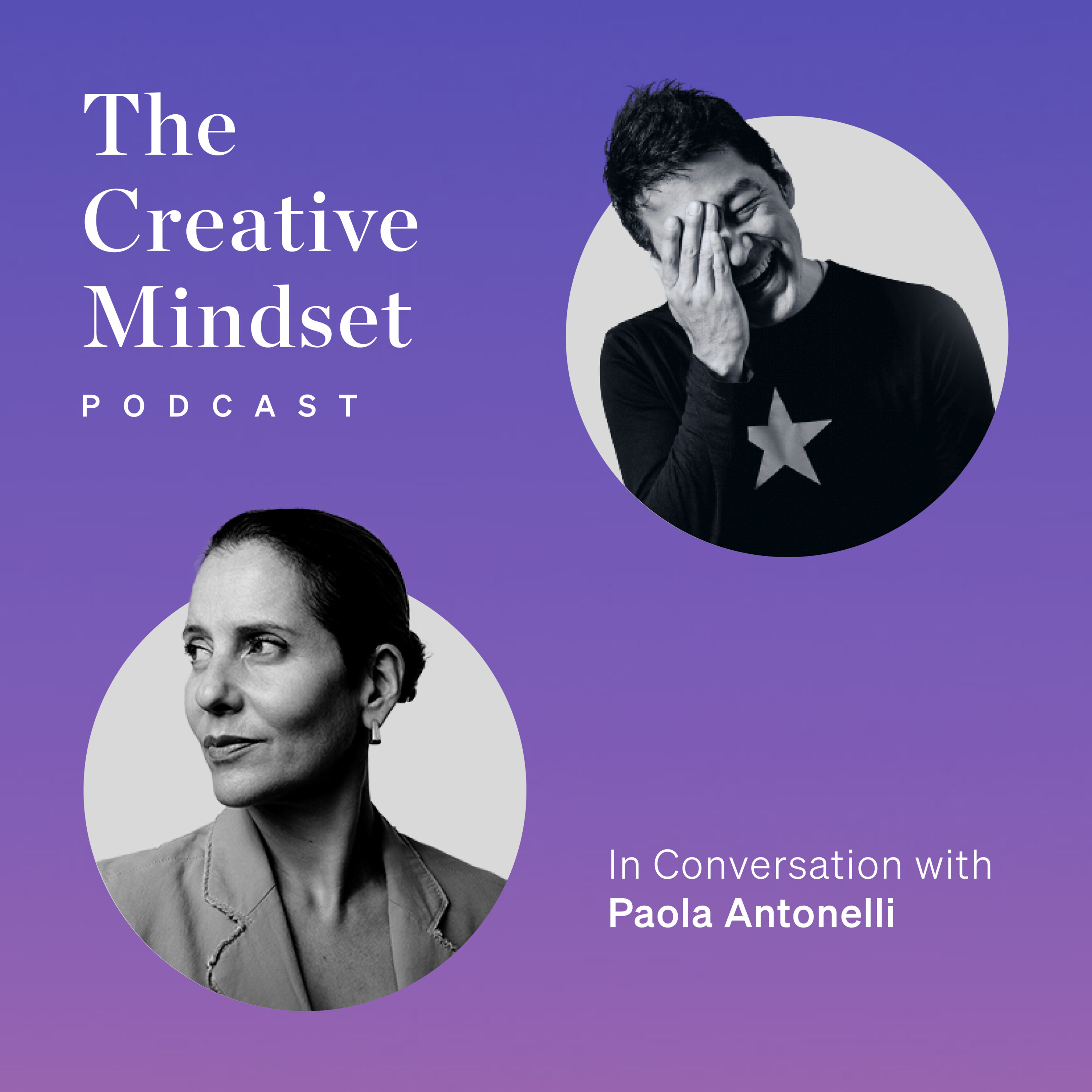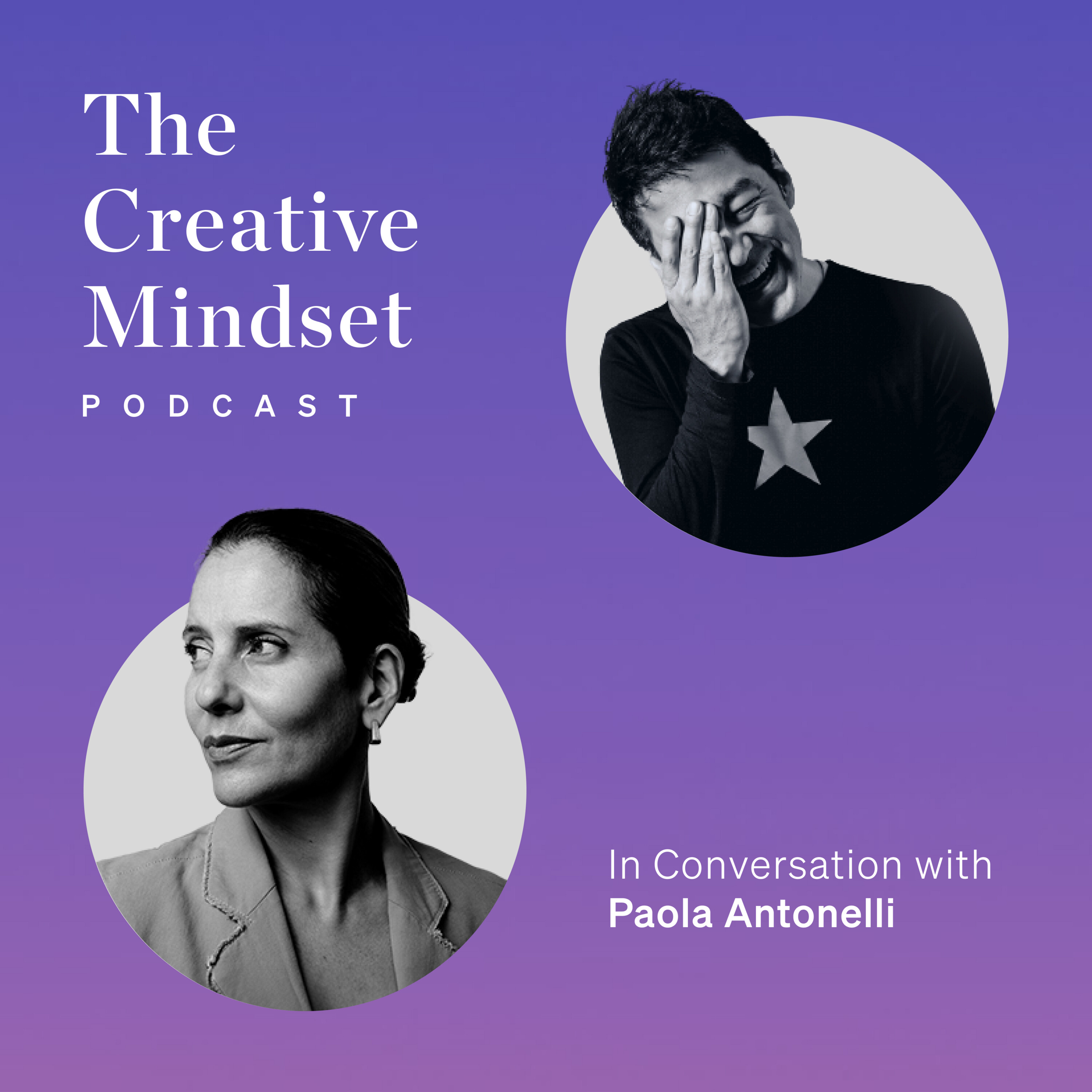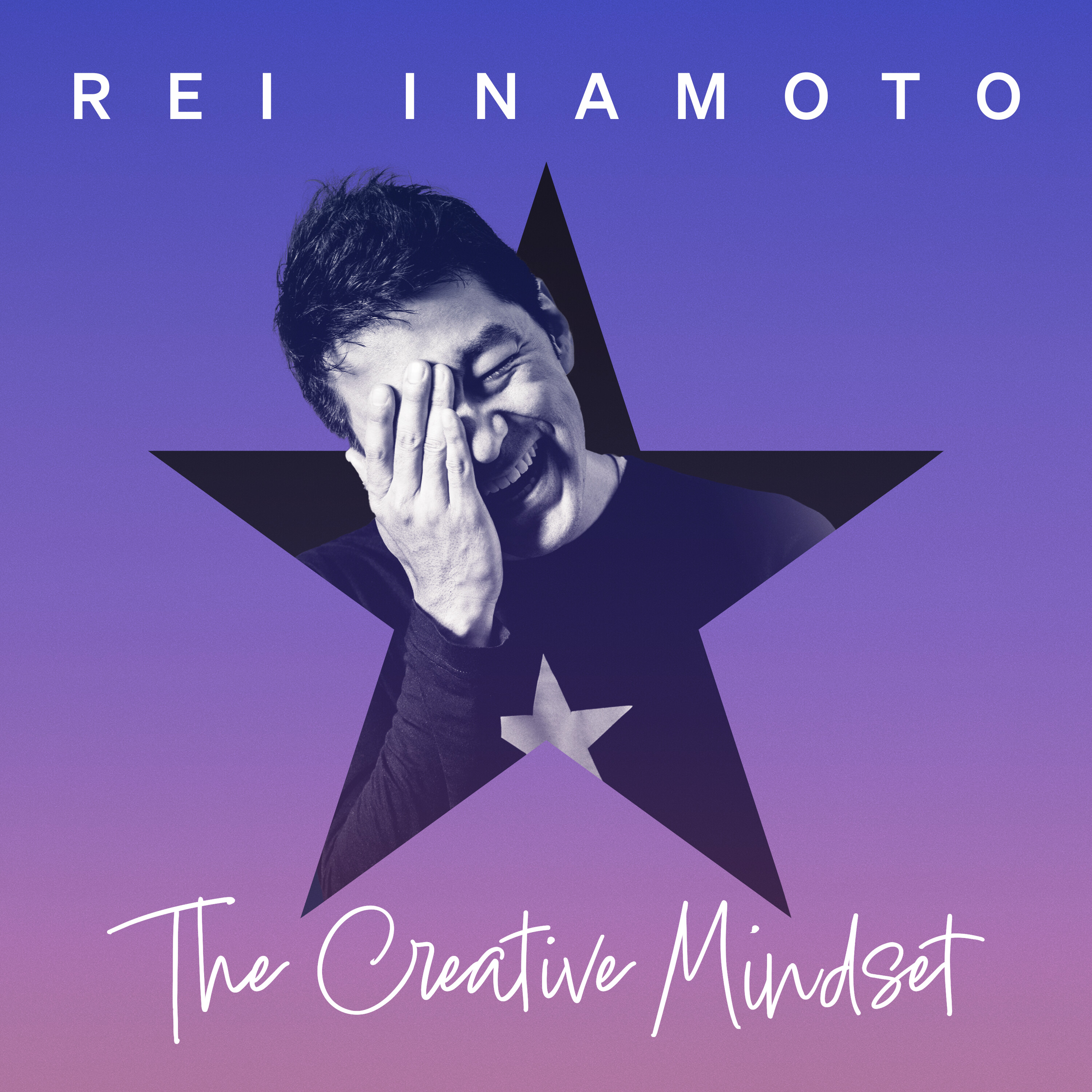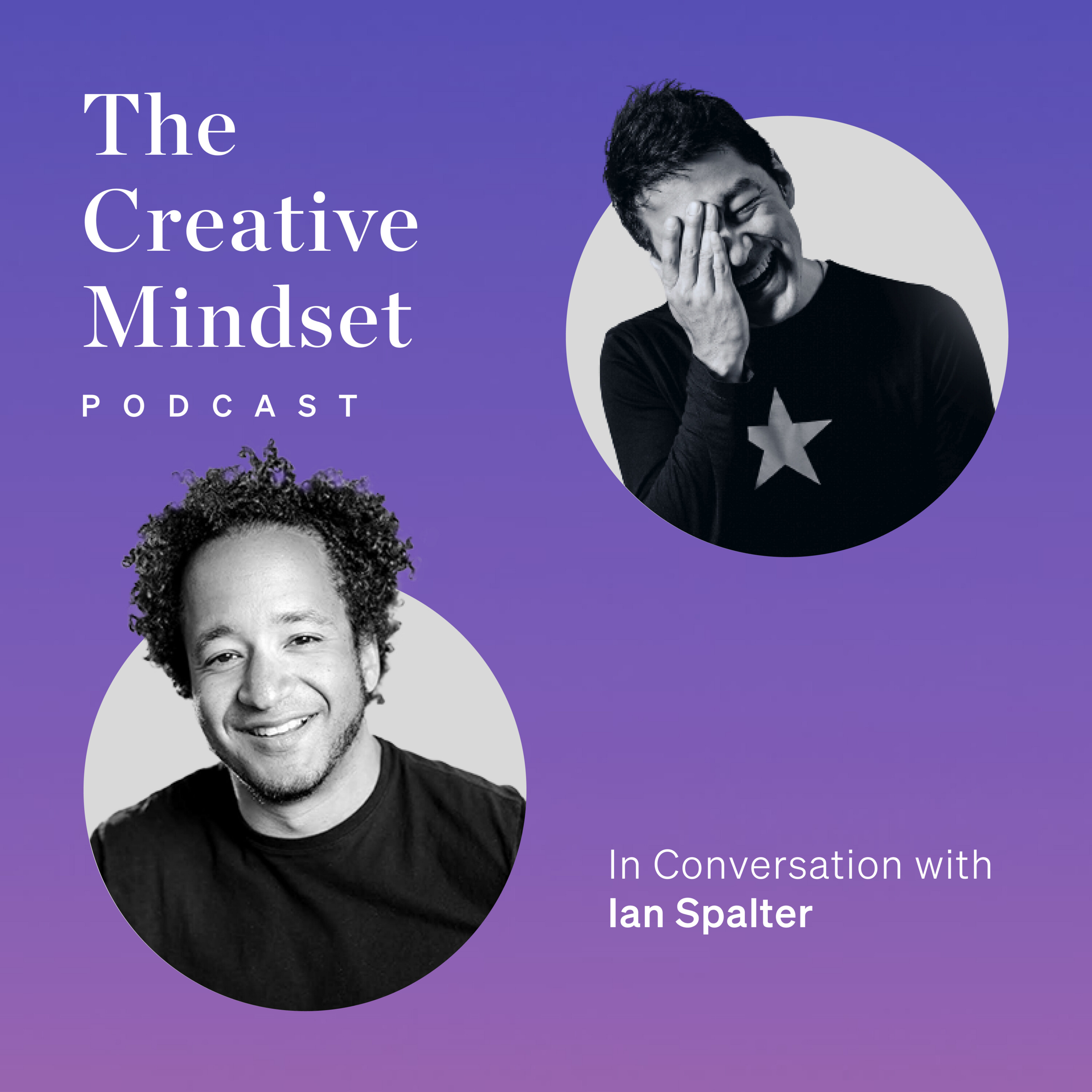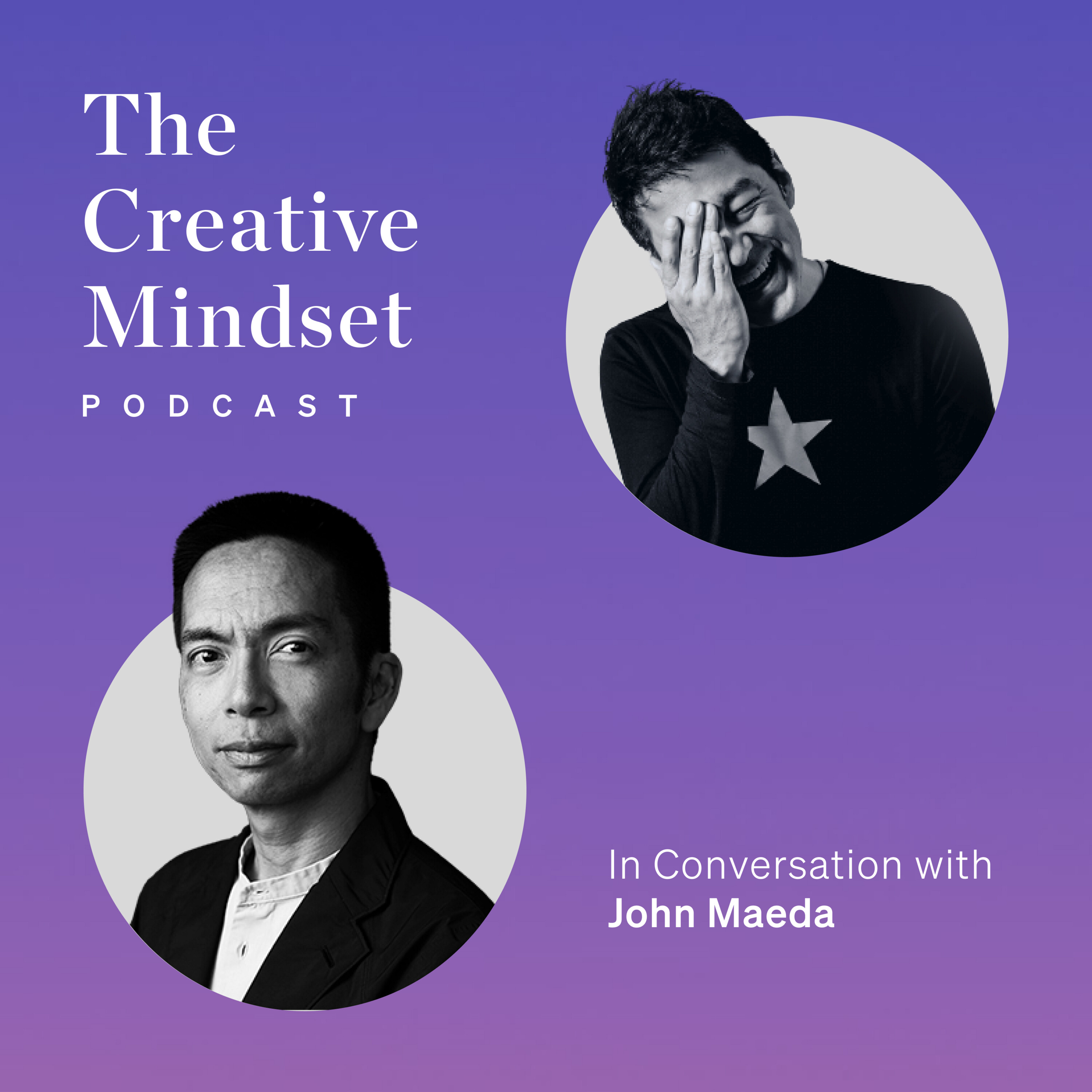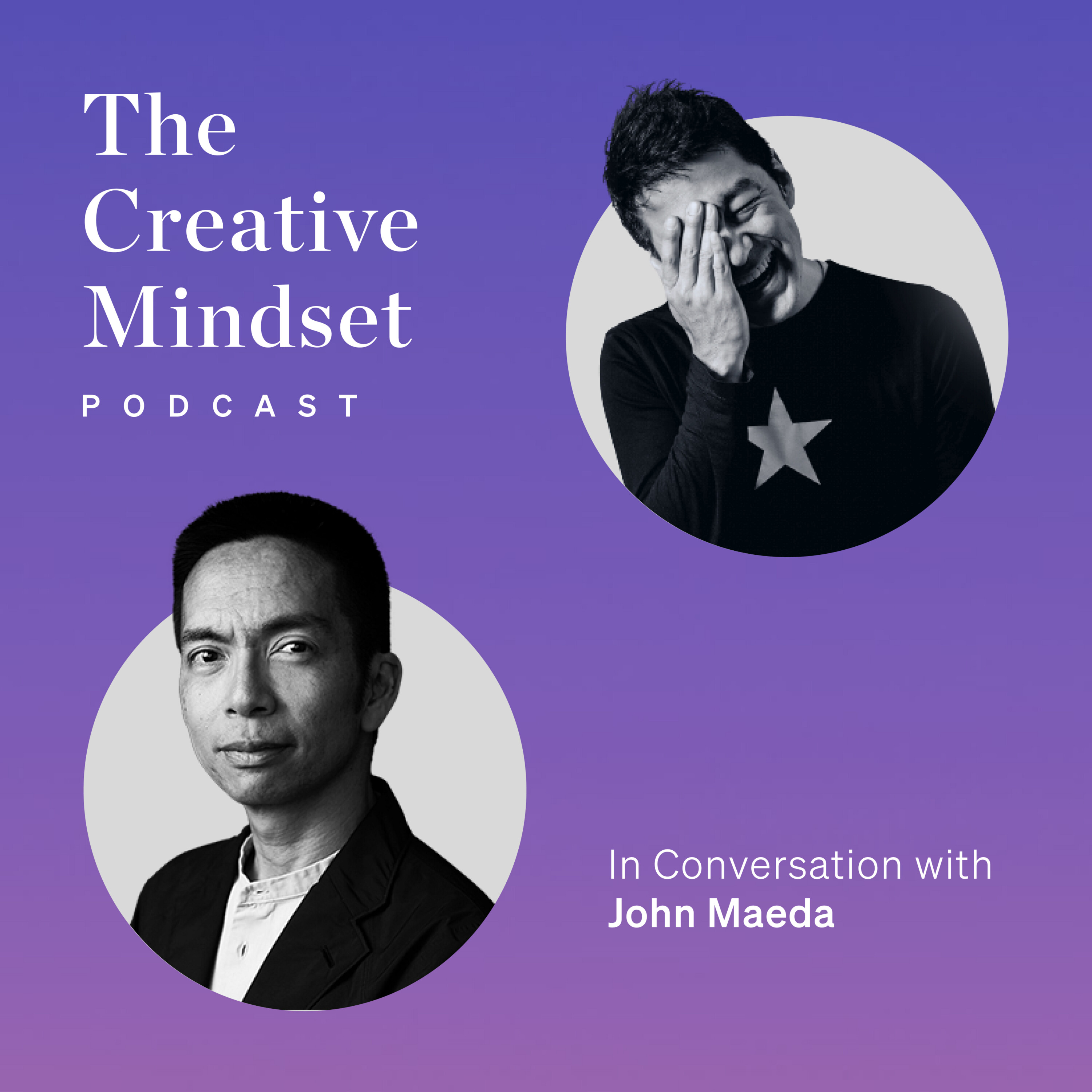00:03
This is Reinamoto's Podcast, The Creative Mindset.
Welcome to The Creative Mindset, a podcast about the art of building a career through
conversations with the world's leading practitioners of creativity. It's an intimate
journey on how they got started, their turning points, failures, and tips on work and life.
I am your host, Reinamoto, the founding partner of I&CO, a global innovation firm
based in New York and Tokyo. Today's episode is part two of my conversation with Paola Antonelli,
the Senior Curator of Design at the Museum of Modern Art. In this episode, we get into the
specifics of her work as a curator, how and where she finds her inspiration, where creativity comes
from for her, and finally, the definition of creativity according to Paola Antonelli.
Her definition of creativity was a refreshing and surprising one for me,
and in a way, it was very Paola Antonelli. So let's get started.
So speaking of shows that you've created, so many shows, but if you had to pick key shows
in your career, what would be? You know, there are many. The first one was very strong. It was
called Mutant Materials in Contemporary Design. It was 95. So I'm gonna pick the ones that are
important to me, not important historically necessarily. So Mutant Materials was very
important because it was an exhibition that gave me a sense of confidence about especially my
display skills, right? Because it was a gorgeous show. The topic was good. You know,
I had picked the topic of materials because in 95, there were all these new materials,
and what was very important is that many of these materials could be designed by the designers
themselves without going back to chemical engineers. So there were new resins that could
be cured at ambient temperature, right? Or composites that you almost had to lay by hand.
So there was a different agency on the side of the designer. So interesting topic and great,
beautiful display and exhibition. So that gave me a really good sense of confidence. Also,
it was the first and last time, the moment that we do it, but most of the exhibition could be
touched. So that was one exhibition that I feel was very strong. I didn't realize that Mutant
Materials was your first show. What do you think sort of helps you bring that kind of creativity
to the way you curate shows? And you know, not just that one, but other things like the humble
masterpiece that you mentioned, you know, these everyday objects like paperclips and other things
that people wouldn't necessarily pay attention to. Yeah. What gives you that creative edge?
Who knows? I mean, I know that I have a real passion for design. The creativity part,
03:06
I really don't know. I mean, I studied architecture, but that does not explain
everything. I think it's really like a personal, I'm sure that you have these different
ingredients in your personality that define you and that you recognize too. Like for instance,
all of the art handlers that work with me at MoMA know very well, I put things with my eyes,
I put things on the wall with my eyes, not with measurements. So it really is. It's very funny
because they know it, they laugh, you know, because they put something on the platform and I'm
like, well, and they like, okay. And they just turn it and then I feel better. So if something
is slightly askew, it doesn't block your imagination, right? If something is in front
of you like this, where are you going to go? You're going to have to split your ways, right?
But then it's also the desire to really explain in the most efficient way possible. So there's
always really a desire to attract people's attention. And I think that the creativity
that you talk about is almost like when flowers become really fragrant to attract bees, you know,
it's really a way to capture people's attention one way or the other, so that
they come to really appreciate design. That's an interesting metaphor to talk about creativity.
I don't think I've ever heard that kind of description or metaphor of what creativity is.
So that's quite useful. It's my creativity, not all creativity is like that. But yeah,
that's how I, it's how I use it. Yeah. So I want to switch the topic a little bit and,
you know, you talked about these key moments and turning points and the shows that you remember
well, but what about, what about mistakes? What about failures? What, what failure can you,
can you share with us? And what did you learn from them? Oh my God. I had a lot of rejections,
but I can't remember any failures. Well, if I may pick there, so rejections, tell us a little bit.
Yeah. What do you mean? Well, just like shows that were rejected, you know, proposals that were
rejected that I'm really sorry about. So I also have a lot of far-fetched shows that were not
accepted that more like design and violence. It happened as another project of broken nature.
It happened in Milan. But in that case, it was not a show that I wanted to do, but I felt that I
had to do it to, to just like do something that was not as self-centered as everything else that I
06:01
do. Yeah. Is there a show that you had proposed, but got rejected that you would love to resurrect?
Many, many, many, I mean, um, broken nature. No, I proposed it to MoMA in 2013 and it was rejected
at that time. And then it became the 22nd Triennale di Milano in 2018. And then it came to MoMA
afterwards. Um, um, I'm trying to think of what else. Well, I proposed an exhibition on interspecies
design five years ago and didn't go through, but many, many, many, I tell you, I think it's quite
normal. But it seems like, you know, although you, you did have a lot of rejections, you keep,
uh, you keep a stock of them and you don't, you know, you, you find, uh, other opportunities to
make them realize. In some cases and some others, no, you know, in some cases you say, okay, maybe
it was not such a good idea. In other cases, you wait. In other cases, you find another place to do
the exhibition. In other cases, it becomes, uh, you know, it was a documentary or website. So it
really depends. What drives you? What drives your curiosity? What drives your motivation?
Well, um, my curiosity drives my motivation. Curiosity really it's this, uh, amazing curiosity,
this idea of like adventure. So adventure to me means like, yes, going to Singapore,
going to Bali where I've never been, but it also means going to Queens to, uh, a restaurant where
I've never been. So it's like, oh yeah. So we're going, Larry tells me, we're going to Flushing.
There's this Hunan restaurant. I'm like, adventure, you know, so immediately becomes an adventure.
So I love things that I don't know yet. Uh, so I guess what drives me is really a passion for
what I don't know, or what is not me. Is it because of you, your parents, how your parents
raised you? Is it, you know, what, what gave you those qualities do you think?
Well, I certainly grew up in a very stimulating environment intellectually. Um, my father and
mother are both doctors. My dad was a surgeon and he also was a professor and ran a hospital.
My mom was a blood analysis expert, um, and both had other interests. My dad was like papers for
his university by doing playing jazz piano and correcting proofs of newspapers. My mom was doing
her things, you know? So it was always no holds barred. And it was also very demanding in terms
of standards. Um, so maybe a good part of it was, was taught, or at least I was given the freedom
to investigate, right? Nobody ever stopped me. And even when I started going to foreign countries,
like very often it happened that kids of my generation, every summer, um, we would be sent
09:06
to a different city in Europe to learn the language for at least a month and a half.
And, um, and very comfortable with languages that I didn't know and places that I didn't know.
What drives your curiosity?
I am like a vampire. The best way for my spirit to be lifted is to do a studio visit
with a really great designer, but it is to be a great designer. If it's not a great designer,
I become more depressed, but it's a great, it's a great designer. I'm just thinking,
you know, one of the best studio visits I've had lately is with Annie Liu. She's a wonderful
artist. And so, you know, a visit with Annie, fantastic. Uh, you know, that really, it's like
a vampire seriously. Otherwise it's not easy. Maybe music, music can help. And, uh, I just,
other people's creativity, right. Or an amazing, an amazing movie, something that really makes me
think like, how did you think about this? Something that really surprises me for its creativity.
Uh, to the extent that you can share what's next, uh, what, what do you have in your plan in terms
of your show? What's next? There's so much going on. So I just opened an exhibition that's called
Never Alone. That is about the video games in MoMA's collection. So in 2012, in 2010,
I started collecting video games from MoMA. And, uh, there are now 36, we collect like slowly,
deliberately, we had to decide the protocol, the criteria, you know, there was a lot behind it.
And so this exhibition just opened. It's about interaction design and the video games in the
collection. Then I'm going to keep on going, uh, with my project Design Emergency that is, uh,
with Alice Rosthorn. Alice Rosthorn is, as you know, foremost design critic, and she's one of
my best friends. And we've been doing together this, uh, this survey we started in, in May,
in April, 2020. So during the pandemic, and it's called Design Emergency, because at the beginning,
we were interviewing on Instagram, all of these designers that had to do with the pandemic. And
then it keeps going on Instagram. Um, and then also we published first, we did a special issue
of wallpaper magazine that we published a book and we keep going with that. I am very good as
a movie director. I'm very good as a leader of a team because I somehow really trust the people
that I work with when they didn't demonstrate that they are trustworthy. I trust them completely.
So many of the people that I work with, like engineers, electricians, et cetera, or audio
12:02
visuals people, they always laugh because they, I look at them and they say that something is
difficult. And I tell them, Oh my God, you're so going to get it done. I'm sure. And I mean it,
you know, and so by making people feel that they have it, that they're going to make it, they do.
So, and I really get very, very good in situations of great pressure. I just become cold
and calm. And I just like make everybody feel like it's going to be just fine.
So there's a lot, you know, and I want to reprise a project that I've been
working on for way too long. I'm not even going to tell you how long about food as design,
you know, so I want to reprise that. So there's always like never a dumb moment. The ideas are
too many. That's the problem. Yeah. Ideas are a dollar a pound, you know, it's making them happen.
That is really tough. This was the second part of my conversation with Paola Antonelli. As usual,
I like to share my three takeaways from this conversation. Takeaway number one, creativity
is like flowers becoming fragrant to attract bees. Number two, success is a function of rejection.
And number three, ideas are a dollar a pound. Takeaway number one, creativity is like flowers
becoming fragrant to attract bees. As I said at the beginning of this episode, I found this
definition by Paola very Paola in that it was something that was unexpected. It was different
from any other definition that I've heard from anybody else. Creativity is one of those words
that is quite difficult to define because it can contain many different meanings and it could mean
different things to different people. In her case, because of the line of work that she does,
which is curating design for an exhibition and for an audience, and the way she uses creativity
is exactly like she said. It's like the flowers becoming fragrant to attract the audience to that
flower. So in a way, the show itself is a flower and that fragrance that comes out of the flower
is the creativity for her in curating shows. And again, I thought that definition was very different,
but it gave me a new way to think about creativity. And as a curator, that's exactly what she does,
which is to bring a new perspective to look at the world. Number two, success is a function of
15:07
rejection. When I asked her about failures in her career, she actually said, oh, I don't have any
failures, which surprised me, but it was quickly followed by, oh, but I have had many rejections.
As a curator, and even though she's one of the top curators in the world, she still has to come up
with new ideas for new shows that she would want to curate. And she still has to submit that to
the MoMA where she works and or other organizations and other events that she might be curating for.
And those shows or the ideas for those shows would have to be accepted by different organizations.
And apparently she has had many, many rejections and she still has a lot of shows that haven't
realized, but you know, she wasn't crying over those directions. And she had a very relaxed
view on getting rejected, which I thought was quite, quite encouraging. So, you know, for somebody
as successful and as well known as Paola, she's had many rejections and that's why she succeeded.
So number two, success is a function of rejection. Number three, ideas are a dollar a pound.
This is a fairly common expression, I think. And, you know, this is meant to say that coming up with
ideas is the easy part. The really, really hard part is putting those pieces together to bring the
idea to life. At least, you know, coming up with ideas, you can come up with them in your head.
So the only limitation that you would have is your imagination. But making those ideas,
bring them to reality, you know, bringing them to life requires tenacity, requires connection,
requires money, requires time, requires a lot of different things and different pieces of the
puzzle that you have to put together. And that's really the hard part. So, you know, when I was
a young designer, I think I used to be quite precious of my own ideas and I didn't want to
reveal those things more. But as I've aged and as I've become more experienced, I've become accustomed
to ideas getting killed many, many times. So this notion of ideas being a dollar a pound, you know,
it's something that's cheap and, you know, you shouldn't feel precious about is a very sage
piece of advice that we should all, we can all learn from. So to summarize, three takeaways.
Number one, creativity is like flowers becoming fragrant to attract bees. Number two, success is
a function of rejection. Number three, ideas are a dollar a pound. That was part two of my conversation
with Paul Antonelli, the Senior Curator of Design at the Museum of Modern Art. For those of you
18:03
listening to this podcast in English, I should reveal that this podcast is being produced in
English and Japanese. Obviously, these conversations are recorded in English, but what we do
is we translate the English conversations into Japanese and we broadcast the Japanese version
of these episodes first in Japan, and then we produce the English version that you're listening
to. To reveal a little bit of behind the scenes, the two episodes with Paola happen to be some of
the most popular episodes of this podcast, so I hope you enjoyed listening to Paola's episodes as
much as I did and as much as the audience in Japan did. Next up is my conversation with John Maeda,
the design technologist and often referred to as the Yoda of design. The conversation with him
is as educational as it is enlightening, so stay tuned.
I am your host, Rei Inamoto, and this is The Creative Mindset. See you next time.
